Biodiversity makes all life possible. The water we drink, the air we breathe, the outdoors we enjoy, the food on our tables – all of it depends on a thriving web of life. This web is like a Jenga tower– with all the pieces working together, the tower stands strong. But as each piece is removed, the tower becomes more and more fragile until, eventually, it collapses.
In recognition of the need to preserve and protect the biodiversity that enriches and sustains our lives, every May 22nd the world honors International Day for Biodiversity.
Few places better exemplify biodiversity and the importance of wild public lands as havens for plants and animals than the Greater Gila Bioregion, located deep in the heart of the American Southwest.

Photo: Adriel Heisey
More biodiverse than Yellowstone and as wild as the Frank Church-River of No Return Wilderness, the sacred Greater Gila Bioregion is one of the nation’s last remaining truly wild places. Black bear, cougar, elk, coatimundi, porcupine, 300 species of birds, over 30 species of fish, and many species of cacti, grasses, shrubs, and trees all can be found here.
The Greater Gila is also the ancestral and contemporary homelands of at least 18 different Indigenous Peoples, which may help explain why so much of this diversity persists here.
As we celebrate the Gila Wilderness’ 100th birthday this June, we highlight some of the critters that make it a national hotspot for life on International Day for Biodiversity.
Mexican spotted owl (Strix occidentalis lucida)
ESA status: Threatened
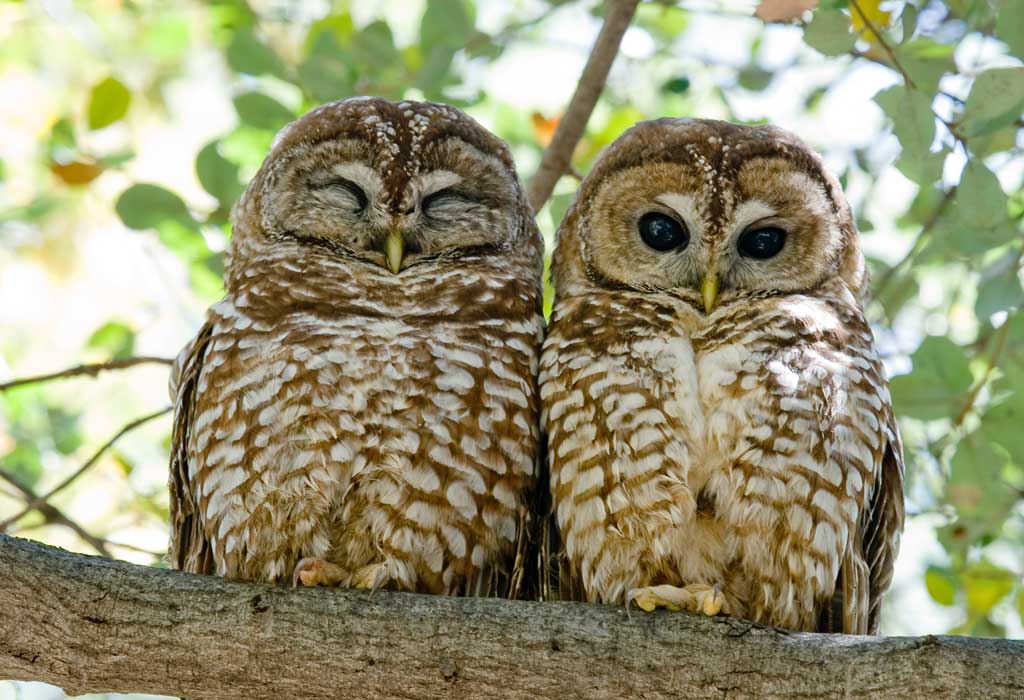
Photo: Dave Palmer
Right about now, Mexican spotted owl chicks are hatching in nests built in the remaining forests in the Southwest, as they do every May. WildEarth Guardians has tenaciously fought to protect the Mexican spotted owl and its ancient forest habitat since the mid-1990s, when the species was first recognized as threatened. Mexican spotted owls are an indicator species for the health of the old-growth forests they depend on. Logging and thinning of mature and old growth forests, and the loss of nesting, roosting and foraging habitat are the greatest threats to this species. Grazing, mining and other human disturbances also threaten the passive and secretive spotted owl. A place where ancient firs and pines reach to the sky, and centuries of geologic activity have cut deep canyons, the Greater Gila is one of the last strongholds of the Mexican spotted owl.
Mexican gray wolf (Canis lupus baileyi)
ESA status: Endangered and experimental, non-essential
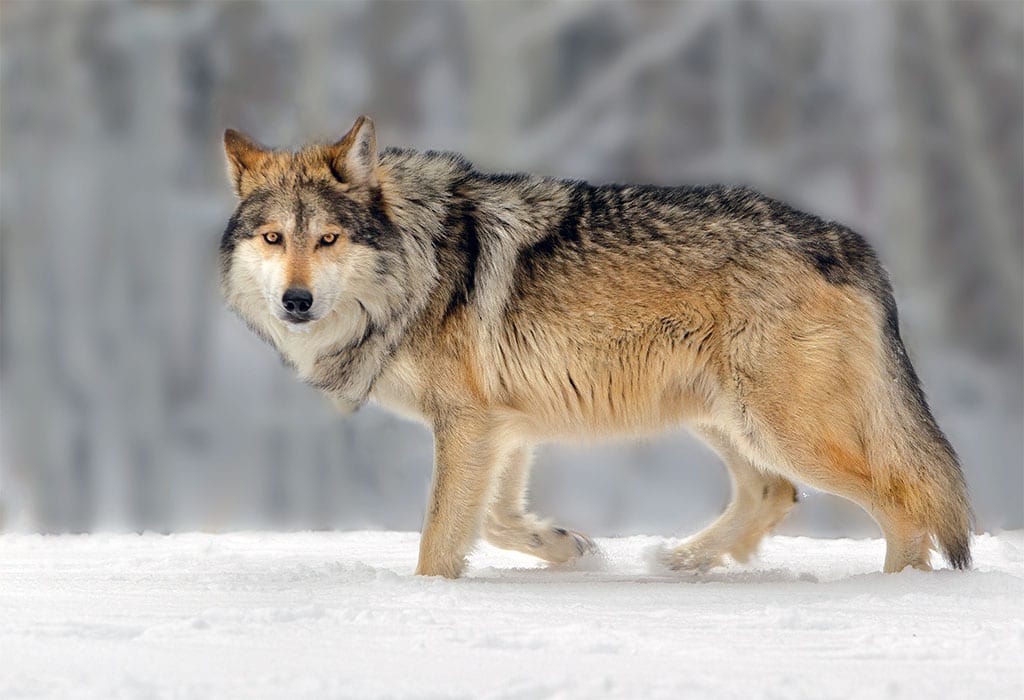
Mexican gray wolf. Photo by Ray Rafiti.
The Greater Gila is home to the country’s only population of critically endangered Mexican gray wolves, 257 known individuals. Also known as the lobo, the Mexican gray wolf is the smallest subspecies of gray wolf. Predator control programs nearly succeeded in eliminating the Mexican wolf from the landscape by 1970. The entire captive population is descended from only seven wolves, which were shuttled into a captive breeding program at the eleventh hour before the species went extinct in the wild. These iconic wolves face threats from illegal killing, a limited range, sanctioned killing at the behest of the livestock industry, and a worsening genetic crisis. In order to recover, lobos need the U.S. Fish and Wildlife Service to work to create more genetic diversity within the population, and allow lobos the freedom to roam throughout suitable habitat in the Southwest.
Chiricahua leopard frog (Lithobates chiricahuensis)
ESA status: Threatened
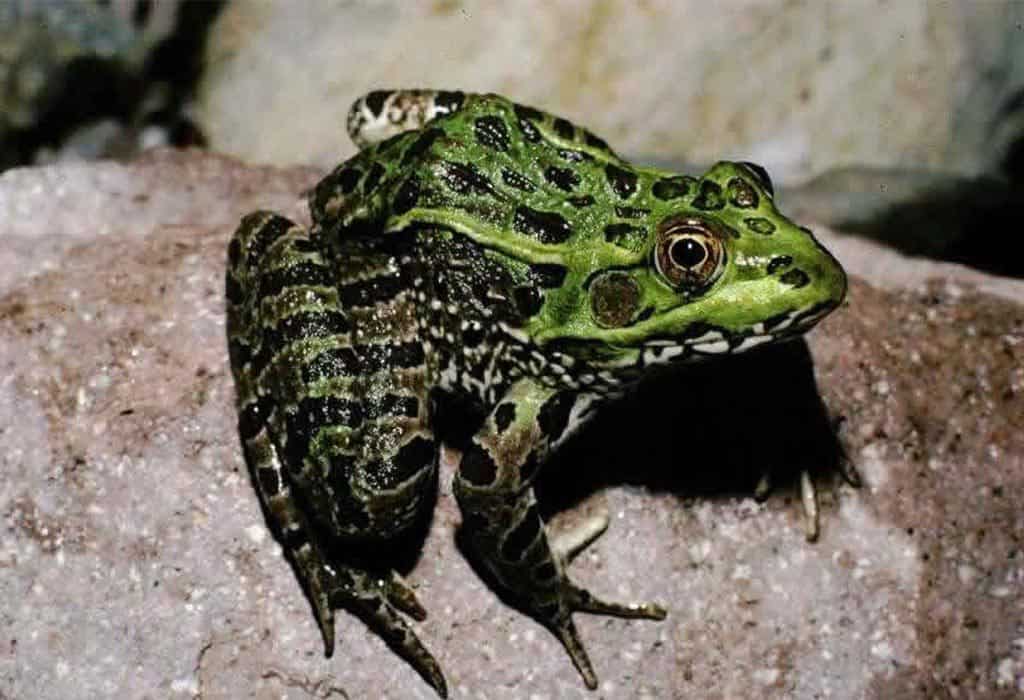
Photo: Jim Rorabaugh
A streamside critter found in the cienegas, lakes, and ponds throughout the Greater Gila on both sides of the Arizona/New Mexico border, the Chiricahua leopard frog is one of few frogs listed under the Endangered Species Act. But even with these federal protections, the future of the frog is in jeopardy. The species has now vanished from more than 80 percent of its former habitat in Arizona and New Mexico. Vast swathes of this habitat, especially in Arizona’s White Mountains and surrounding parts of the Greater Gila Bioregion, is still unprotected, left vulnerable to water diversions, cattle destruction from streamside grazing, motorized recreation, road construction, mining, and more. The Chiricahua leopard frog, a vital thread in the tapestry of the wild, depends on a protected Greater Gila, connected in wildness across state boundaries.
Our children and all future generations must inherit a world where the Chiricahua leopard frog can still be heard.
Gila Trout (Oncorhynchus gilae)
ESA status: Threatened

Photo: Arizona Game & Fish Department
The Gila trout is a true treasure of the Southwest as one of the rarest species of trout on Earth. Gila trout reside in cold streams in the upper elevations of the Greater Gila, including the headwaters of the Gila River both in Arizona and New Mexico. Gila trout can grow to about 17-18 inches and are yellowish-brown, gold or copper. Between logging, drought, and climate impacts such as rising water temperatures and intense weather events like scouring floods, Gila trout face severe threats to their survival. These treasured and rare fish depend on Gila Guardians fighting to keep forests standing across the Greater Gila to protect the clean water that supports all life downstream.
Gila Monster (Heloderma suspectum)
ESA status: none, but protected by state laws

Photo: Getty Images
This iconic lizard of the southwestern deserts is another member of the Greater Gila Bioregion. Highly camouflaged, elusive, and frequently underground, Gila Monsters are not rare, but they are hard to spot. In the Greater Gila, the subspecies of the Reticulate Gila Monster is prevalent. These carnivorous reptiles are an essential part of the ecological tapestry of the Greater Gila.
The bite of the Gila Monster is venomous, though according to the National Park Service, “reasonably cautious people who watch where they put their hands and feet will not be bitten by a Gila Monster.” In fact, people pose a much greater threat to Gila Monsters through collection, road kills, habitat loss and, as horrific as it is, even intentional and illegal killing. Gila monsters are protected in both Arizona and New Mexico, as well as in other southwestern states and Mexico.
Spikedace (Meda fulgida)
ESA Status: Endangered
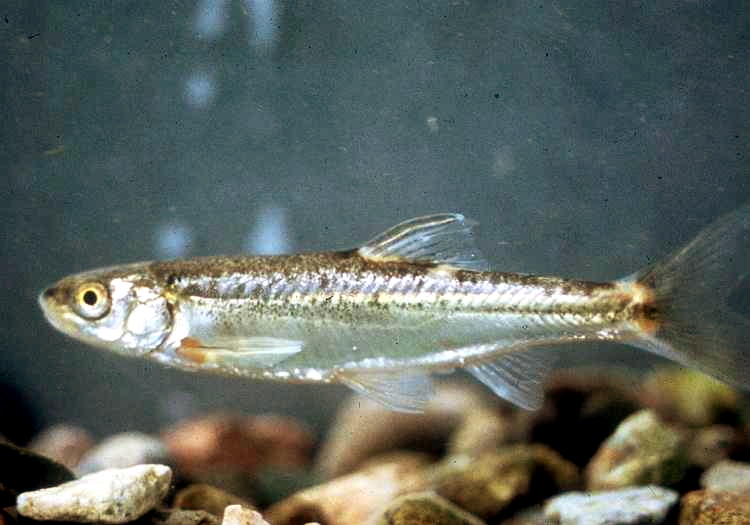
Photo: U.S. Fish and Wildlife Service
Another aquatic inhabitant of the Greater Gila, the spikedace is a tiny fish that only grows to a maximum size of three inches – no lunkers here! Once abundant throughout all of the watersheds of the Greater Gila, spikedace populations have precipitously declined and strong recovery measures must be implemented to preserve spikedace across the bioregion. Water diversions and livestock grazing in riparian habitats are known to be major threats to spikedace survival, in addition to mining, drought, and climate change. These fish depend on stronger habitat protections for Gila waterways, particularly restrictions on grazing in sensitive habitat, if they are to recover.
Pinyon jay (Gymnorhinus cyanocephalus)
ESA status: Petitioned for listing

Photo: Getty Images
The Greater Gila Bioregion is a stronghold for the pinyon jay, which is suffering major population declines across the U.S. However, in the Gila, the pinyon jay is thriving among the vast, wild stands of piñon and ponderosa pines. Backwards forest “management” such as thinning, burning, and chemical treatments of pinyon-juniper woodlands has had detrimental effects on Pinyon jay populations, and the bird is also vulnerable to oil and gas development and climate change. With the pinyon jay petitioned for listing as a threatened species, protecting its Gila habitat is more essential than ever.
Mogollon death camas (Zigadenus mogollonensis)
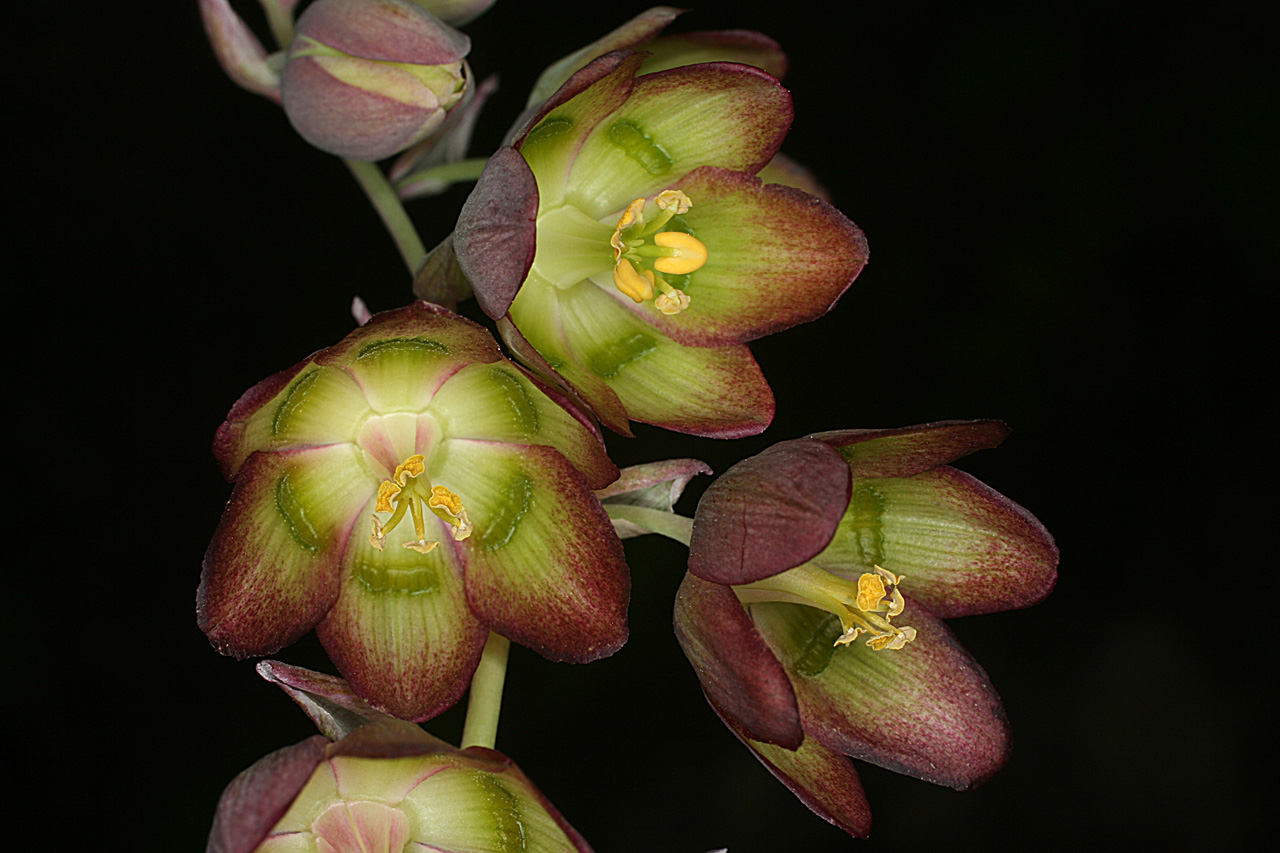
Photo: Russ Kleinman, Bill Norris, Leith Young & Richard Felger, Mogollon Mountains
If you travel in the Greater Gila in the late summer, you may be lucky enough to see this rare plant flower. The Mogollon death camas – and yes it is poisonous – thrives in the upper elevations of a very small portion of the Gila Wilderness. This rare plant is often found on the forest floor near stands of aspen. The range of the Mogollon death camas is so narrow that it can only be found in the Mogollon Mountains in the area of White Water Baldy and adjacent peaks. The rarity and beauty of the Mogollon death camas deserves to be protected.
Add your name to the growing list of Greater Gila Guardians
As we celebrate the Centennial of the Gila Wilderness and honor the remarkable species that knit the Greater Gila together, we are clear-eyed about the existential threats this landscape faces – and the specter of extinction that we must prevent at all costs. Click here to join our efforts to protect the Greater Gila for the next century and give this landscape and all the life it supports a fighting chance to not just survive, but thrive.
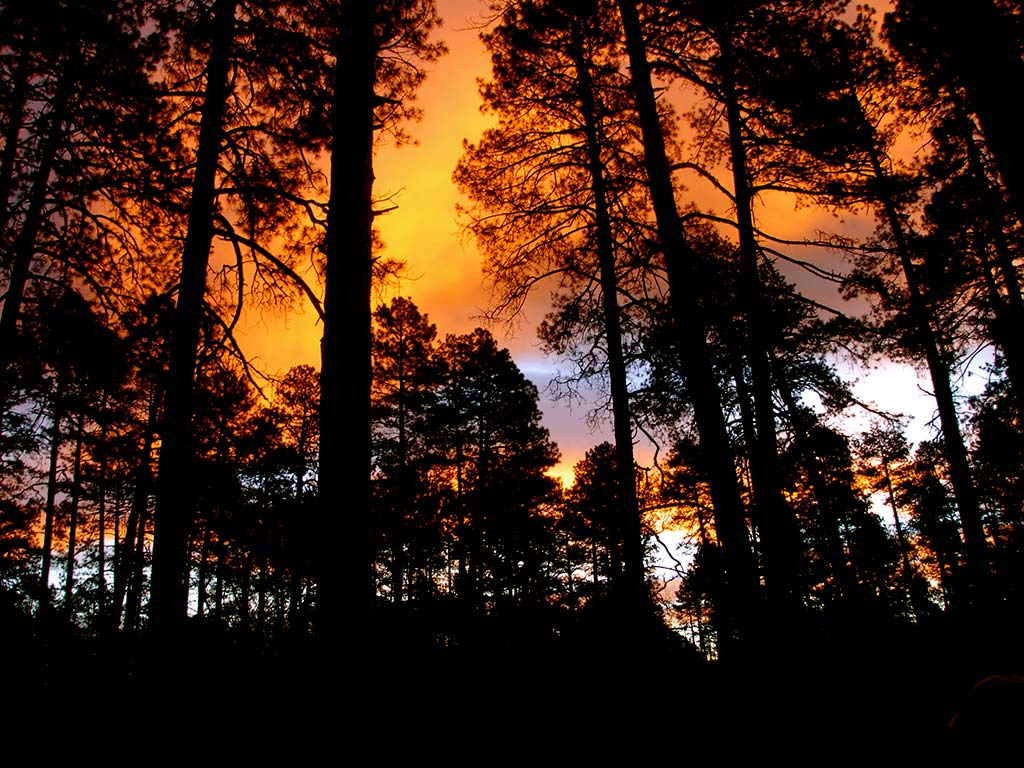
Photo: Leia Barnett